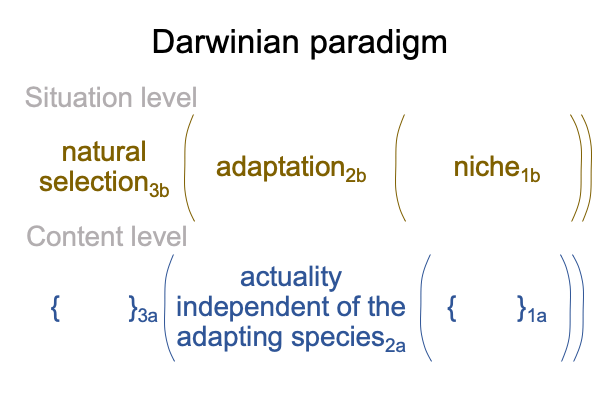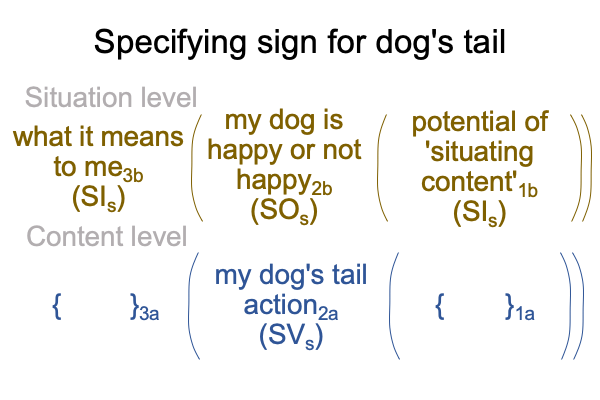Looking at Joseph Farrell’s Book (2020) “The Tower of Babel Moment” (Part 4 of 10)
0032 So far, the pointed mention of a common language before the construction of the Tower of Babel suggests a single people speaking a single mother tongue, rather than a translator stone that maps between the language of an established elite (Sumerian still is spoken in temple halls and in schools of learning) and the language of immigrants (Akkadian is spoken by the newcomers, both elites and common folk).
However, the image of a common language does not rule out the possibility that there is an instrument, a translator stone, capable of rendering Sumerian into Akkadian and back again. Plus, this instrument would be in the hands of the newcomers, the “administrative” elites, who have taken over management and think that Nimrod is a great sport. These administrators would never cross Nimrod and his family. But, they might subvert the execution of those royal commands that do not advance their own interests.
In fact, the established elites and the incoming elites have their own incentives to fashion a single people for the mighty hunter to rule.
0033 Indeed, certain clues in the Genesis text and subsequent commentaries argue against the suggestion that the term, “common language”, requires a single people speaking a single mother tongue.
But, what does the idea of a common language indicate?
0034 Farrell asks the reader to consider late 19th and early 20th century inquiry into the Indo-European language radiation, which documents many of linguistic transitions through writing. Yes, writing is invented soon after the proto-Indo-European population rapidly grows and diversifies and settles new lands (including Europe, Persia and northern India).
The proto-Indo-Europeans are a single people with a common tongue around 4000 B.C. Writing first appears slightly later in Mesopotamia and Egypt. So, this language radiation picks up writing along the way, enriching the documentary evidence for the hypothesis of a language radiation from a single population.
0035 Indeed, scientific inquiry into spoken languages and peoples shows that these two go together for the radiation of the Indo-European family of languages.
0036 Can the same be said for all spoken languages?
Do all spoken languages and populations go together, all the way back to the population that founds Homo sapiens?
Plus, wouldn’t it be nice if scientists obtain a psychometric object that can verify an affirmative answer. The psychometric object cannot be writing, since writing starts, say, around 3000 B.C., and anatomically modern humans appear in the archaeological record before 200,000 years ago. Perhaps, a computer simulation will suffice.
Statistical correlations might work.
0037 What does this tell me?
Does Farrell want to find a key in the union of language and populations (hence, genetics)?
The union of language and population is supported by well-documented research into the Indo-European radiation. The divergence of the languages is documented in writing, so to speak.
The union of language and population supports the alluring psychometrics of modern linguistic inquiry. Inquiry discerns more and more expansive language families, reaching back to the earliest Homo sapiens. Is the divergence of all languages documented by our genetics, so to speak?
Such documentation will make the union of language and population uncontestable.
Will the union be so uncontestable that one can construct an ideology that says, “If we share a common tongue, then we are one people.”?
And, can that ideology be so persuasive that everyone in a region buys into it, even though they speak different languages?
0038 I wonder, and in that wonderment, I offer the following three-level interscope as Farrell’s next procrustean bed.

0039 On the content level, the actuality of a translator stone2a is contextualized by an ideology of a common language3athat is supported by the potential of ‘technical and group cohesion’1a. This material and immaterial cohesion1a must be strong enough to sustain an ambitious project of monument construction2b.
Working against this cohesion1a is the potential that the labor is immigrant and not particularly well-remunerated1b. Here, the alchemic knowledge1c that contextualizes the tower’s construction2b comes into play. Alchemic knowledge1c supports the ideology that both elite and immigrant practice a common language3a, courtesy of the translator stone2a.
0040 Here is the virtual nested form in firstness.

Consider the psychometrics.
If immigrant and slave labor serves as a potential1b by itself, then, to me, it seems unlikely to support the actualization of the tower2b that the techical organization3b aims to achieve.
If immigrant and slave labor serves as a potential1b in the above virtual category-based nested form, then it1b operates as a psychometric object working within the virtual normal context of elite alchemical knowledge1c and the potential of ‘the technical and group cohesion’1a that the technical organization3b demands.
Consider the numerological approach.
If I consider a number for this virtual nested form, I suppose it would be the number 5. In binary code, {5} is {1(22)+0(21)+1(20)}. The perspective (22) and content (20) levels are posited. The situation (21) level is negated, or transformed into something that it is not: a psychometric object1b.
No immigrant or slave (by himself or herself) ideates that he or she is either immigrant or slave (because all are of one people due to the common language ideology).
0041 On the situation level, the actuality of tower construction2b is contextualized by technical organization3b and operates on the potential productivity of immigrant, not well-remunerated, labor1b. That does not mean that they1b are not well fed. They are fed slogans daily.
0042 On the perspective level, the elite’s hidden normal-context of celestial manipulation3c brings the actuality of the tower as a psychometric object2c into relation with the potential of ‘elite alchemical knowledge’1c.
The virtual nested form in the realm of normal context is telling. I assign the number three.

0043 In binary, {3} is {0(22)+1(21)+1(20)}. The perspective-level is negated, thereby forcing everyone to think in terms of sensible construction.
In fact, the official propaganda is that the intended purpose of the tower is to serve as a stairway from heaven to earth. The tower is an invitation for a celestial being to descend and find refreshment. So, the number 3 is not enough. There is one more “level” that packs the entire three-level social construction into… um… a content-level actuality2a?
0044 Okay, then about the number 11?
In binary, {11} is {1(23)+0(22)+1(21)+1(20)}.
So, the {1(23)} affirms the negation of the perspective-level normal context by masking its emptiness with a public proclamation2a(new) that covers over the “0” in the perspective-level normal conext3c.

At this point, I wonder, “May I call this numerology business, ‘numerometrics’?”
0045 What about non-biblical version of the same type of story as the Tower of Babel?
Notably, the Meopotamian epic, Ennerkar and the Lord of Aratta, notes that, way-back when, everyone addresses Enlil in a single language, then Enki mixes up the speech of men.
In the event, the mix-up involves an envoy going to the mountains of Aratta, in order to obtain gold and a specific form of silver, capable of participating in alchemic synthesis. What would the envoy synthesize? The translator stone? A philosopher’s stone? A formula to bind illusions, such as an ideology that everyone speaks a common tongue, to human minds, so that everyone accepts the ideology while, at the same time, obviously speaking different languages? A translator’s stone can be spell binding.
0046 Farrell next mentions the Mayan creation account. Parallels between the Popal Voh and the Tower of Babel are numerous, especially an implicit threat that human knowledge increases so rapidly as to threaten the gods. Human knowledge includes cosmological information. Human can identify the four corners of the sky.
In particular, the gods identify intellectuals as the problem. In order to address their fears, the gods introduce wives and women to cause procreation and stop the accumulation of technical and alchemical knowledge.
Keep those explicit abstractions in check!
0047 Here, I return to the interscope for social construction before the confounding of speech.

Note how the titles of each level change.
0048 Here is what happens next.






















